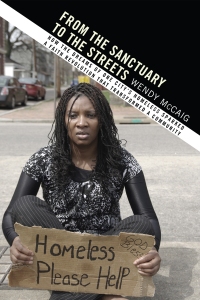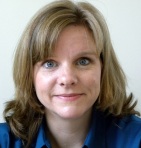 Servant Leaders, Servant Structures
Servant Leaders, Servant Structures
Elizabeth O’Connor
http://wp.theoblogical.org/?page_id=3782
Insights from Chapter 1
I have been seeking to discern how to build organizational structures that foster creativity and unleash the missional imagination of people seeking to follow Christ in tangible ways in our community. Church of the Savior is one of only a handful of Christian ministries I have found that has achieved this objective masterfully. In Chapter One of Servant Leaders, Servant Structures, available in full at http://wp.theoblogical.org/?page_id=3782, Elizabeth O’Connor provides us with insights into the history, successes and struggles in the formation of Church of The Savior and the many missional expressions of the church which have emerged out of this gathering of faithful Christ followers.
Below are a few insights I found interesting.
O’Connor shares that “In time [founder Gordon Cosby] was to believe even more deeply in ordinary persons who, in turn, were to believe more deeply in themselves. This is probably why the community that has come into being under his leadership gives so little attention to credentials.”
Paradoxically, this community which takes so little notice of degrees gives inordinate attention to education. In every eleven-week semester… classes dealing with some aspect of the inward-outward journey are offered. They vary in content and focus, and range all the way from “discovery of self” to journalizing and contemplation. Most of the classes are conducted in the manner of a seminar with each student presenting findings from the application of the week’s assignment in the living out of his or her life.
Gordon Cosby was to say that this concept [annual recommitment to the disciplines of the church], perhaps more than any other, was the one destined to be the most helpful in retaining integrity of membership.
As we grew in our understanding of silence, we gave more emphasis to the contemplative life. When we become too busy, Dayspring is always there as a reminder that there is no true creativity apart from contemplation.
If the church was to find servant structures, the small groups had to be formed around focused and defined missions with each mission also committed to an inward journey of prayer, worship and study.
Gordon Cosby still feels that the churches, in their quest for structures that nurture life in people, must know that they are venturing into new territory, and that the resources for their exploration rest in the tremendous untapped potential of their own people. The difficulty is that we so often lack confidence in ourselves and in our companions and search for the answers in some other place.
In his preaching and in his conversation he was reminding his own little band that the call of God was a call to create a new kind of community that would be distinguished by its humanness. It would be so human that those in it would do whatever was needed so that everyone in the world might be free. He was reissuing the call to which we had first made response. Later he was to tell the moderators of newly formed mission groups, “A time comes in the life of every group when it loses sight of its goals and must choose them again. Your job will be to sound again the call, to be the bearer of the vision-articulating it in your own life and helping others to see it.”
We formed classes in Christian Vocation. In these classes we were taking a deeper and longer look at the whole matter of call as having to do with the transcendent-the being grasped by that which is greater than we. We began with the basic assumption of the New Testament that there was no way to be the church except by the call of Christ, and that there were a number of dimensions to this call. The class dealt primarily with the fourth dimension. If the church is a sent people, where was Christ sending each of us? The call was to move out-to discover where we were to lay down our lives-to take up the stance of the suffering servant, and make witness to the power of Jesus Christ’s work in us.
Actually call was to come to most of us through the ordinary events of life, which were to be extraordinary events because we brought to them a new quality of asking and listening.
Our sermons, classes, and conferences were all concerned with helping others to hear call and discern gifts. We found ourselves so often asking, “What would you like to do?” is a question we still ask indiscriminately-of the very young and the very old, of poor and rich, oppressed and oppressors, and then we listen very carefully and take with utmost seriousness what a person says.
We worked out a procedure requiring every mission to be confirmed by the Church Council. This never meant to us that everyone had to be enthusiastic about every call. Oftentimes we have had to be willing to let another move even when we have large reservations. Our learning to do this with a certain degree of ease, probably more than any other factor, accounts for the proliferation of mission groups in the community of The Church of The Savior.
We have found it incredibly hard to hold to the concept of the inward and outward journeys. We early discovered that not many persons want them both. Weighted heavily on one side or the other, most of us struggle intensely to keep these two dimensions in any kind of creative tension in our individual and our corporate lives.
[When Cosby was] asked, “What do you think the future of the church is?” He replied, “I have never had a helpful answer to that question. Have no idea. I do not know what the judgments of God are or what will be the breakthroughs of God’s power.” Then he stopped for a long pause and added, “I do not need the church to have a visible or successful future in order for me to feel safe as a person. I’m glad to leave it to God’s sovereignty. It is his church-not mine.”
To fight for integrity of membership within existing structures is certainly extraordinarily difficult, but there is hardly any path that frees one from that struggle. In all of us something powerful is at work which seeks to remake the new concepts into the old. “Community” can quickly be changed into “conformity,” and “call” into “duty.”
The inward-outward structure of the mission groups defines the church as a servant people called into existence to be the community for others.
What we did at that important juncture in our life was to face the importance of structurally implementing a description of “Who we are.”[as defined by their disciplines]
The Council as the governing body of the church was reorganized as a “Mission Council,” comprised of two representatives from each confirmed mission group, who served in rotating order for a period of a year. Representatives reported to their groups what transpired in Council meetings. Any decisions made were binding on the whole membership. When the Council determined that an issue was of such nature as to require confirmation by the total membership, a general congregational meeting was called.
Our mission group structures are tougher and more durable because they have had to cope with the financial dimension. A group responsible for its own finance is not likely to close shop for the summer or to show laxity in ways that it might if someone else were footing the bill. Furthermore, when the money is ours we relate to the whole sphere of economics in a way that would not otherwise happen. This became increasingly evident as our missions in the inner city placed us in the midst of the poor. We returned to our homes at night feeling less easy with our own life styles.
In our small church community the mission groups began to multiply. They were structures that Gordon Cosby had helped to form and that were, in turn, forming him. Although his life was given to working with all the small groups, he was a member of only one, subject to its covenant, under the authority of those whose gifts had been confirmed, his heart and mind enlarged and stretched by commitment to the few. He believed too passionately that strong leadership existed within all the groups. He was, however, and still is available to any group as guide and counselor. Sometimes he is called in at points of crisis to be a reconciler. More often he counsels a group in the early stages of its formation when members are defining their strategy,
The mission structure gave us a people to companion us in our individual freedom movement. Everyone struggles to break away from the oppressive inner structures that make us all prisoners of one kind or another. We need a people to journey with us out of our own Egypt into the broad land that is promised to all who believe in Him.
Summary of Insights that I think may be helpful in empowering a missional movement in Richmond
- Commitment to integrity of membership by insisting on a high level of commitment to defined disciplines which shaped corporate identity
- Strong commitment lay leadership and belief in ordinary people
- Strong emphasis on education around both the inward [contemplative] and outward [missional] journey
- Missional groups as the organizing structure [Mission Council] and mission as organizing principle; unwavering commitment to the church as sent people existing for others





Pingback: Maintaining Balance « View from the Bridge
Pingback: A Church Resurrected: Interview with Pastor Sammy Williams (Northminister- Part 3) | Wendy McCaig